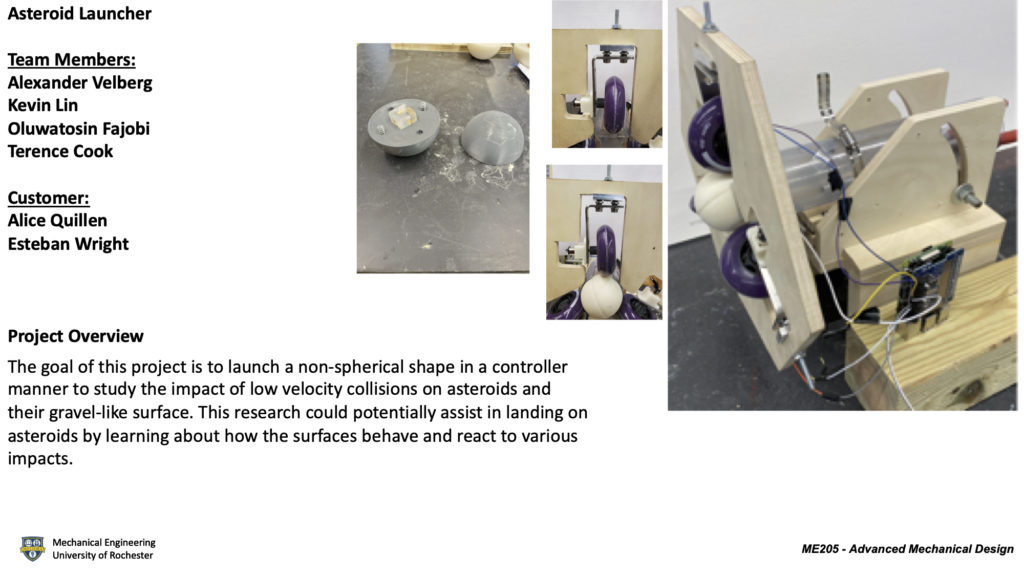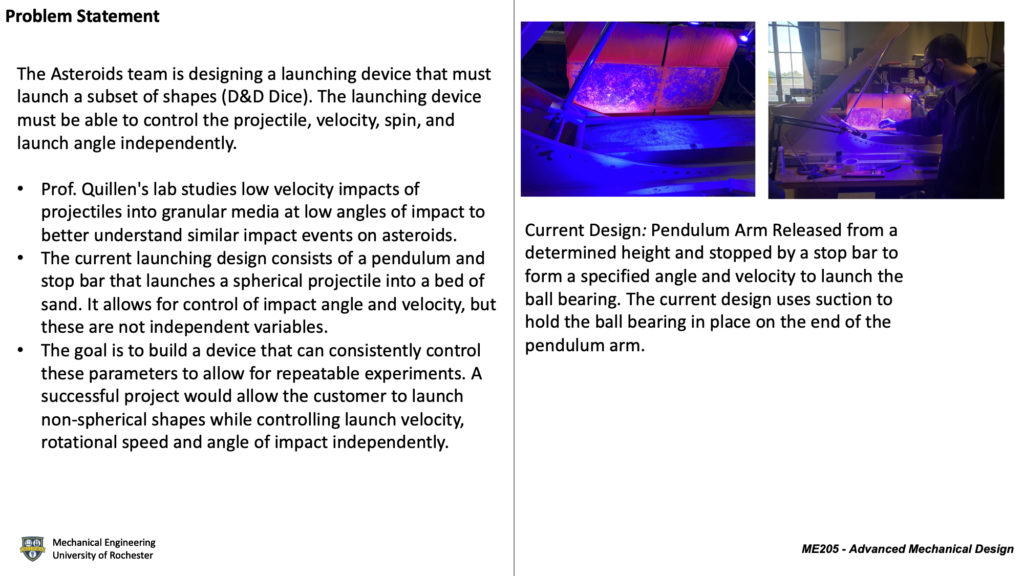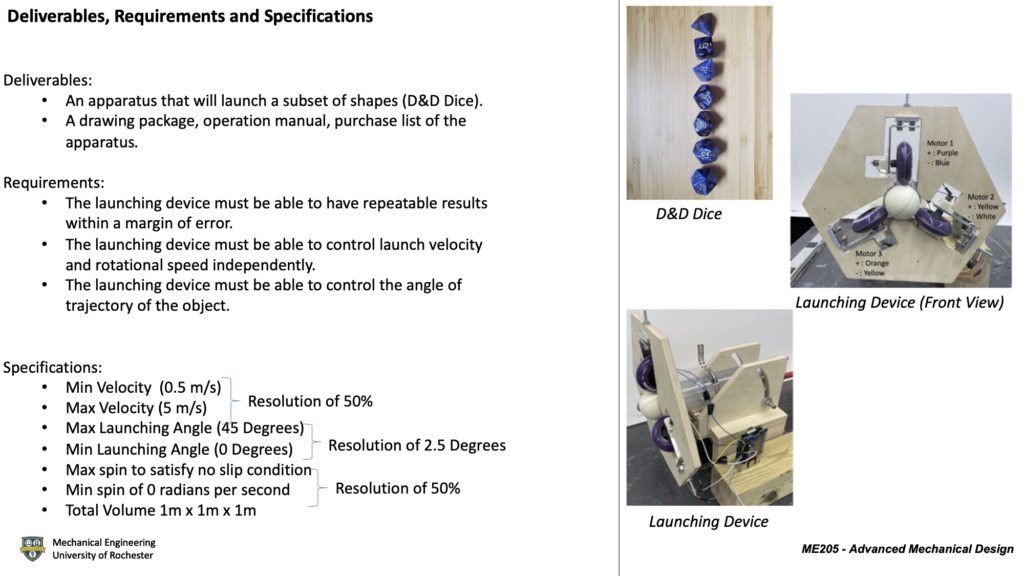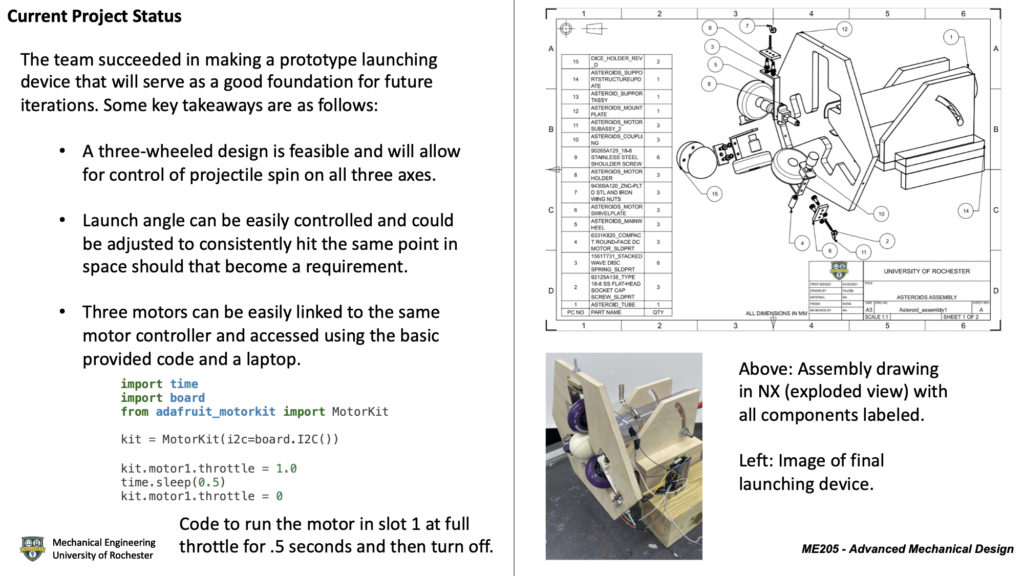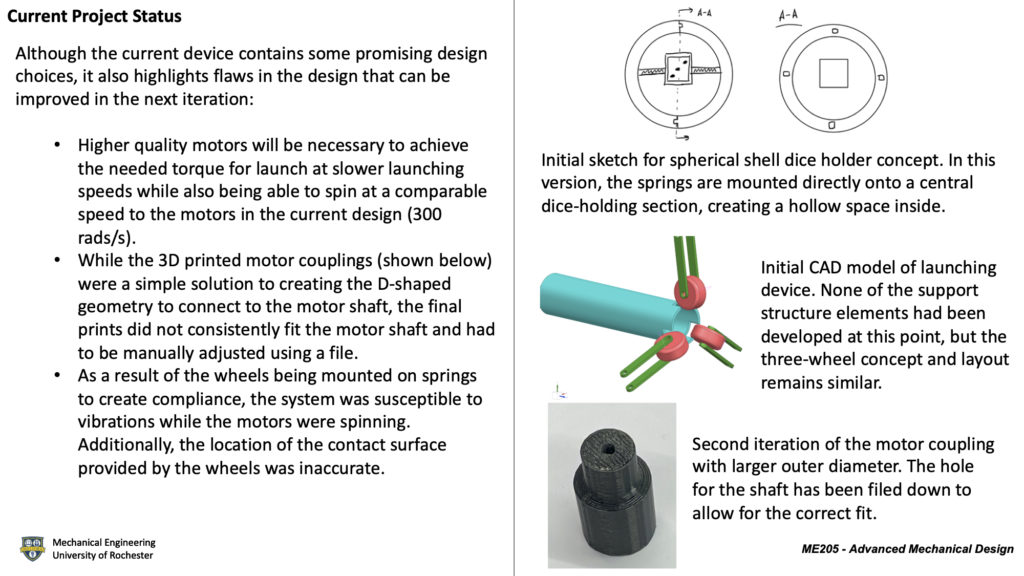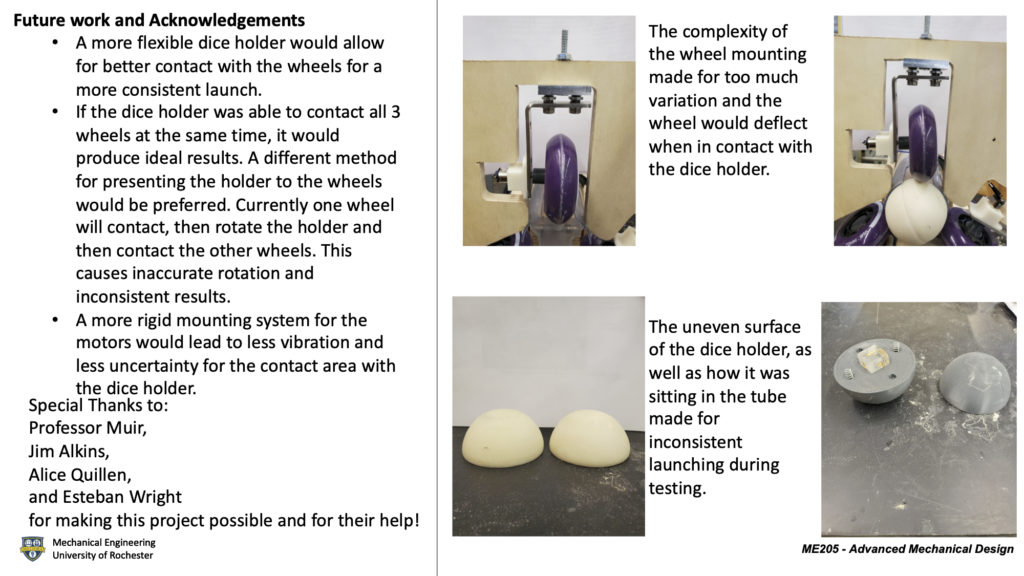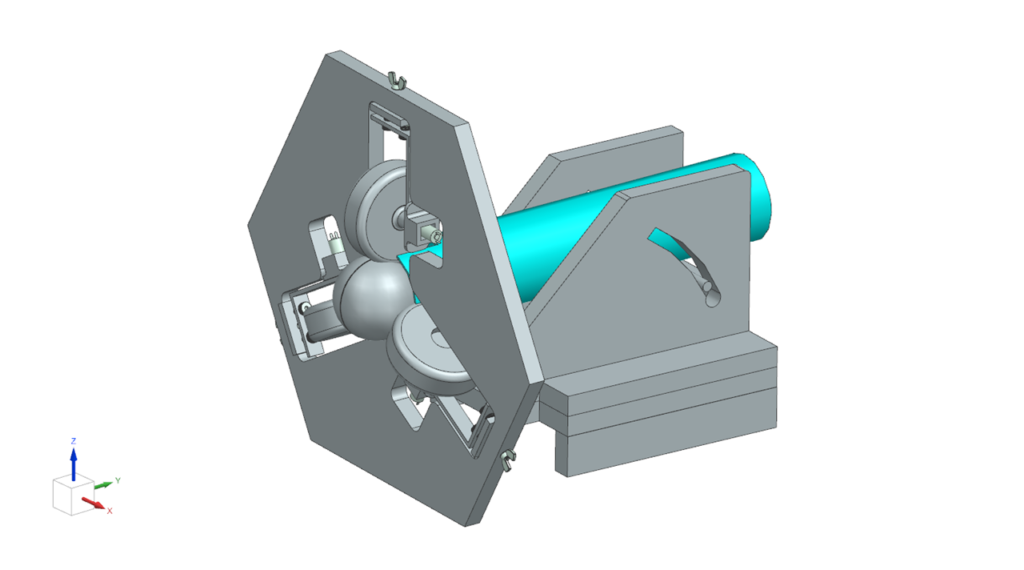
Interactive Model
Team Members:
Kevin Lin, Oluwatosin Fajobi, Terrence Cook, Alexander Velberg.
Customer: Professor Alice Quillen and Esteban Wright.
Project Description
Much existing research is focused on hypervelocity asteroid impacts perpendicular to the surface and with point source impactors [1]. Collisions like these can eject debris from asteroid surfaces that remain gravitationally bound. In the case of a collision between large asteroids, this ejected material may re-accumulate to form a rubble pile asteroid. This process involves low velocity impacts at a wide range of impact angles and with a variety of sizes of granular impact medium. The sponsor of this project would like to study these low velocity impacts with the ability to control, linear velocity, angle of impact and spin to study and characterize their effects on impact dynamics and the subsequent ricochets and rolls that carry the projectile away from the initial impact location. They would also like to experiment with projectiles with arbitrary geometry, especially ones with more sharp points and angles, which may be similar to features of actual asteroid impactors. Understanding and being able to predict these low velocity impacts will be important for the future development of asteroid landing missions in addition to more comprehensive studies of the surface of granular astrological bodies.
The current launcher design consists of a pendulum and stop bar that can launch a spherical projectile into a bed of sand. This system allows for control of impact angle and velocity, but these are not independent variables, as both are related to the height through which the pendulum moves. There are also concerns that this setup imparts backspin on the projectile, which is not always desired. Of course, being limited to only a spherical projectile is also a significant drawback. To combat issues with the current design and allow for a more comprehensive study of low-velocity impacts in granular media, the Asteroid’s team will design and manufacture a launching device capable of launching a subset of shapes (D&D dice from d3 to d6) and able to control launch velocity, rotational speed, and angle of impact independently. The goal is to build a device that can consistently control these parameters to allow for repeatable experiments.

